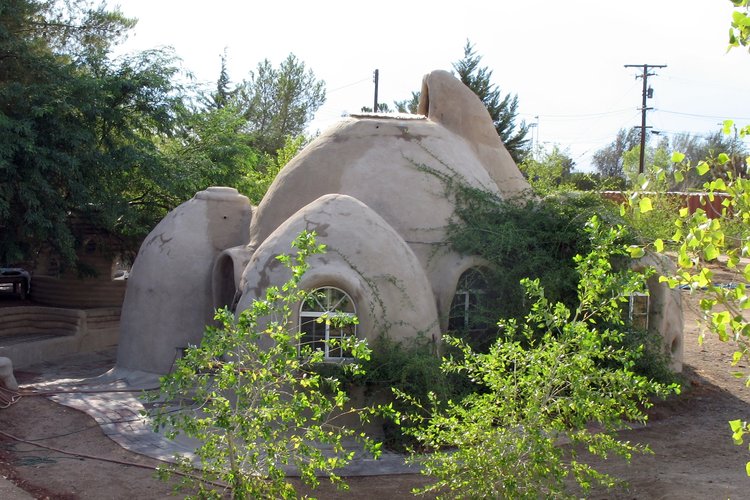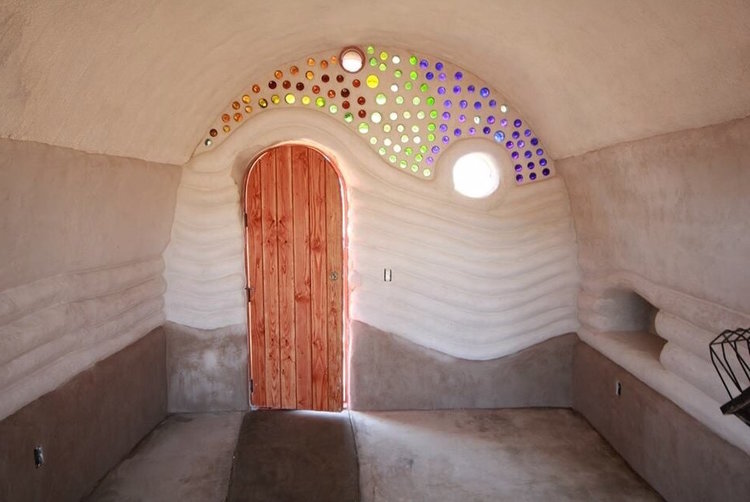Natural homes can be such beautiful, timeless, welcoming and restful places to be. If you have ever had the opportunity to visit, live or stay in a natural home, you might well understand what I am saying here.
I have always seen the home as a natural extension of one's self, and when you are living in a space that feels warm, homely, comfortable and is aesthetically pleasing, you can't help but feel good inside.
Natural homes, in addition to being practical, energy efficient, cost affordable (depending on how you build) and earth-friendly can also be whimsical, highly personalised and can incorporate recycled natural materials.
Over many years now, I have been deeply interested in mastering the art of natural living and in particular, in building my own natural home and helping others to do the same.
When I first started to think about building a natural home, it all seemed rather daunting at first. When I first took the plunge to build my own home with natural materials, I often wondered what I had gotten myself into.
I didn't have any experience whatsoever (apart from a few workshops and building an earth dome) and I had only the most rudimentary of carpentry skills. However, what I soon discovered was that as long as you have two hands, an imagination, the time, the access to resources, and some helping friends along the way, almost anyone who is willing to have a go at it, can build a natural home.
I'm still the amateur when it comes to building; I've made a few mistakes along the way and there were many times when I had to improvise (too many times to count!) but I soon learned that Mother natures materials are very forgiving, and this was a really crucial factor in helping to build my confidence. If you have ever played with clay, you will know what I am talking about.
When it comes to experimenting with creating something new, the beauty of working with natural materials is that they are very pliable/flexible in their nature. Natural materials like cob, strawbales, light clay straw, hempcrete, bamboo and wood can bend and mould into different shapes and forms; you are only ever limited by your imagination as to what you can create. So you can play, you can get really creative with what you are doing and at the end of the day, if something hasn't worked out, you can simply reuse or repurpose the material, or if it is not working out at all, return it to the earth!
Many countries experience housing shortages for many reasons, poverty, war, uninhabitable spaces, lack of land, environmental disasters and overcrowding, (forgive me if I have missed anything here).
Mother Earth needs us now more than ever to be building natural homes.
Whilst we can never return to being cavemen, we can look to the most natural solutions that are most harmonious to us all. We need to build more homes made or derived out of natural materials local to our area (vernacular), materials that are 100% biodegradable, and cost-effective. As my favourite natural builder Sigo Koko says, "Build like you give a damn!"
Attachment 39770
Building a natural home can also be a community builder. Natural building takes time and when you invite your local community, friends and family to participate, it can also be a lot of fun. It is a project that can bring people together, create common ground and saves on labour costs.
To build, or to live in a natural home has the potential to bring so many rewards for not just our generation, but for many future generations to come.
We also need to consider, the mini ice age that will be here in our lifetime. We are going to be needing homes that are well insulated and well built. The thick walls of many different types of natural homes such as strawbale can keep a house passively warm in winter with minimal heating required.
See these threads here for more information about the coming mini ice age.
https://projectavalon.net/forum4/show...over-the-world
https://projectavalon.net/forum4/show....-is-it-a-scam
I do hope to inspire someone along the way, even if it is to begin the first step in considering the relationship that we have between ourselves, our homes and Mother Nature. I feel that the further that we distance ourselves from living in harmony with nature, the further we have distanced ourselves from being able to live in peace, to return to our natural state, and to well and truly know who we are.
I would love to share all the resources I have gathered, share all the practical advice and solutions I have received from those who have trodden the path before me, share practical how-to video's, contribute some of my own unique ideas, and share beautiful photographs of some of the most inspiring natural homes I have seen from the past and present.
I would also like to invite you to share your own building experiences, your natural homes and things you have learned here too!
- Home
- Forum
- Chat
- Donate
- What's New?
-
Site Links

-
Avalon Library

-
External Sites

- Solari Report | Catherine Austin Fitts
- The Wall Will Fall | Vanessa Beeley
- Unsafe Space | Keri Smith
- Giza Death Star | Joseph P. Farrell
- The Last American Vagabond
- Caitlin Johnstone
- John Pilger
- Voltaire Network
- Suspicious Observers
- Peak Prosperity | Chris Martenson
- Dark Journalist
- The Black Vault
- Global Research | Michael Chossudovsky
- Corbett Report
- Infowars
- Natural News
- Ice Age Farmer
- Dr. Joseph Mercola
- Childrens Health Defense
- Geoengineering Watch | Dane Wigington
- Truthstream Media
- Unlimited Hangout | Whitney Webb
- Wikileaks index
- Vaccine Impact
- Eva Bartlett (In Gaza blog)
- Scott Ritter
- Redacted (Natalie & Clayton Morris)
- Judging Freedom (Andrew Napolitano)
- Alexander Mercouris
- The Duran
- Simplicius The Thinker






 Reply With Quote
Reply With Quote


 The use of catenary arches and is that sandstone I see for the walls?
The use of catenary arches and is that sandstone I see for the walls?








 I'll take my grape juice fresh, on the rocks.
I'll take my grape juice fresh, on the rocks.

Bookmarks